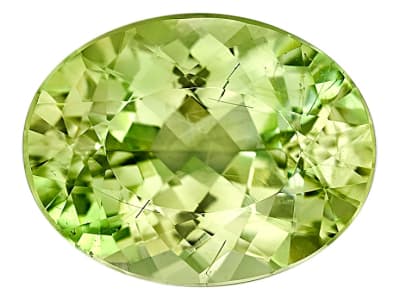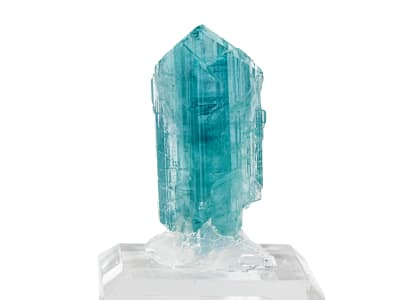Although euclase can resemble beryl in its appearance, that is where the comparison ends. Unlike beryl, euclase contains water, has a monoclinic crystal system, and a higher specific gravity. Only occasionally do its well-formed crystals have sufficient clarity to be cut as gemstones. Crystals are commonly prismatic, can be long or short, and are striated. Because of their rarity, gems with good clarity command premium prices. Most material is colorless to pale blue or pale green, but colors can range from blue to blue-green, green, yellow, white, colorless, and, rarely, purple.
General Information
LWUV: inert to weak red
Euclase Colors
-
 Blue
Blue -
 Colorless
Colorless -
 Green
Green -
 Orange
Orange -
 Pink
Pink -
 White
White -
 Yellow
Yellow
Countries of Origin
Unknown; Brazil
History
It's clear, sparkly, and a 7-1/2 on the Mohs scale. It comes in an array of compelling colors - from blue to blue-green, green, yellow, white, colorless, and, rarely, purple. This stone is extremely rare, and it breaks easily. In fact, its name comes from the Greek words "eu and klasis" which together mean good fracture. All this makes it a great stone for collectors. Euclase can resemble beryl in its appearance, but in no other way are they related. Euclase contains water, has a monoclinic crystal system and a higher specific gravity than beryl. It is only occasionally that its well-formed crystals have enough clarity to be cut as gemstones.
More About Euclase
In modern culture, many stones are ascribed metaphysical properties. There's no scientific evidence that stones have any powers except the power to please. Those who believe in the metaphysical call euclase the happiness stone and believe it can help them feel happy.

